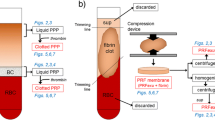Abstract
This paper describes experiments in vitro to investigate the interaction between isolated protoscoleces from Echinococcus granulosus and E. multilocularis and human endothelial cells in monolayer culture. During a maximum coculture period of 48 h neither protoscoleces nor endothelial cells showed evidence of cytotoxicity. However, protoscoleces adherent to either endothelial cells or artificial substrata developed a glycocalyx-like coat. Adherence of protoscoleces to endothelial cells requires serum (pooled human serum or foetal calf serum) in a dose-dependent fashion. However, protoscolex adhesion to artificial substrates such as glass with or without gelatin coating was markedly inhibited by serum. Thus, even 0.001% serum reduced adhesion by 46% compared with the control value. Whilst the chemical nature of the serum components have not been identified, these experiments show that serum contains both inhibitory and promoting factors for protoscolex adhesion, a finding of possible significance for the therapeutic prevention of systemic spread of established Echinococcus infections.
Similar content being viewed by others
References
Agosin M (1968) Biochemistry and physiology of Echinococcus. Bull WHO 39:115–120
Araj GF, Matossian RM, Malakian AH (1977) The host response in secondary hydatidosis of mice: II. Cell mediated immunity. Z Parasitenkd 52:31–38
Baron RW, Tanner CE (1976) The effect of immunosuppression on secondary Echinococcus multilocularis infections in mice. Int J Parasitol 6:37–42
Baron RW, Tanner CE (1977) Echinococcus multilocularis in the mouse: the in vitro protoscolicidal activity of peritoneal macrophages. Int J Parasitol 7:489–495
Birdwell CR, Gospodarowicz D, Nicolson GL (1978) Identification, localization, and role of fibronectin in cultured bovine endothelial cells. Proc Natl Acad Sci USA 75:3273–3277
Brown AF, Lackie JM (1981) Fibronectin and collagen inhibit cell-substratum adhesion of neutrophil granulocytes. Exp Cell Res 136:225–231
Chen LB, Maitland N, Gallimore PH, McDougall JK (1977) Detection of the large external transformation-sensitive protein on some epithelial cells. Exp Cell Res 106:39–46
Frank W (1976) Parasitologie. Eugen Ulmer, Stuttgart
Heath DD (1986) Immunobiology of Echinococcus infections. In: Thompson RCA (ed) The biology of Echinococcus and hydatid disease. George Allen and Unwin, London, pp 164–188
Hinz E (1972) Die Aufbereitung des Infektionsmaterials für die intraperitoneale Infektion der Maus mit Echinococcus multilocularis. Z Tropenmed Parasitol 23:387–390
Jaffe EA, Mosher DF (1978) Synthesis of fibronectin by cultured human endothelial cells. J Exp Med 148:1779–1791
Jaffe EA, Nachman RL, Becker CG, Minick CR (1973) Culture of human endothelial cells derived from umbilical veins. Identification by morphologic and immunologic criteria. J Clin Invest 52:2745–2756
Kassis AI, Goh SL, Tanner CE (1976) Lesions induced by complement in vitro on the protoscolices of Echinococcus multilocularis: a study by electron microscopy. Int J Parasitol 6:199–211
Kirkpatrick CJ, Bültmann BD, Gruler H (1985) Interaction between enteroviruses and human endothelial cells in vitro: alterations in the physical properties of the endothelial cell plasma membrane and adhesion of human granulocytes. Am J Pathol 118:15–25
Kruskal WH (1952) A non-parametric test for the several sample problem. Ann Math Stat 23:525–540
McLaren DJ (1980) Ultrastructural observations on the interaction between host cells and parasitic helminths. In: Ban den Bossche M (ed) The host invader interplay Elsevier/North-Holland Biomedical Press, Amsterdam, pp 85–98
McManus DP, Barrett NJ (1985) Isolation, fractionation and partial characterization of the tegumental surface from protoscoleces of the hydatid organism, Echinococcus granulosus. Parasitology 90:111–129
McManus DP, Bryant C (1986) Biochemistry and physiology of Echinococcus infections. In: Thompson RCA (ed) The biology of Echinococcus and hydatid disease. George Allen and Unwin, London, pp 114–142
McManus DP, Smyth JD (1978) Differences in the chemical composition and carbohydrate metabolism of Echinococcus granulosus (horse and sheep strains) and E. multilocularis. Parasitology 77:103–109
Morseth DJ (1967) The fine structure of the hydatid cyst and the protoscolex of Echinococcus granulosus. J Parasitol 53:312–325
Nemenyi P (1963) Distribution-free multiple comparisons. State University of New York, Downstate Medical Center, New York
Pearlstein E (1976) Plasma membrane glycoprotein which mediates adhesion of fibroblasts to collagen. Nature 262:497–500
Pearlstein E, Gold LI, Garcia-Pardo A (1980) Fibronectin: a review of its structure and biological activity. Mol Cell Biochem 29:103–128
Rau ME, Tanner CE (1973) Echinococcus multilocularis in the cotton rat. The effect of pre-existing subcutaneous cysts on the development of a subsequent intraperitoneal inoculum of protoscolices. Can J Zool 51:55–59
Ruoslahti E, Hayman EG, Pierschbacher MD (1985) Extracellular matrices and cell adhesion. Atherosclerosis 5:581–594
Smyth JD (1972) Changes in the digestive-absorptive surface of cestodes during larval/adult differentiation. Symp Br Soc Parasitol 10:41–70
Smyth JD (1979) Echinococcus granulosus and E. multilocularis: in vitro culture of the strobilar stages from protoscoleces. Angew Parasitol 20:137–147
Smyth JD, Davies Z (1975) In vitro suppression of segmentation in Echinococcus multilocularis with morphological transformation of protoscolices into monozoic adults. Parasitology 71:125–135
Svilenov D, Heymer B, Haferkamp O (1978) Immunomorphology and pathogenesis of Echinococcosis: III. Microscopic immunofluorescence studies in experimental alveolar Echinococcosis. Infection 6:12–15
Todoroff T, Yurukova (1973) Neue Untersuchungen über die Wirkung von Natriumchlorid und Formalin auf die Skolizes von Echinococcus granulosus. Z Tropenmed Parasitol 24:329–335
Author information
Authors and Affiliations
Rights and permissions
About this article
Cite this article
Kirkpatrick, C.J., Svilenov, D. Studies on the adhesion of protoscoleces from Echinococcus multilocularis and E. granulosus to artificial substrates and human endothelial cells in vitro. Parasitol Res 74, 61–68 (1987). https://doi.org/10.1007/BF00534934
Accepted:
Issue Date:
DOI: https://doi.org/10.1007/BF00534934




